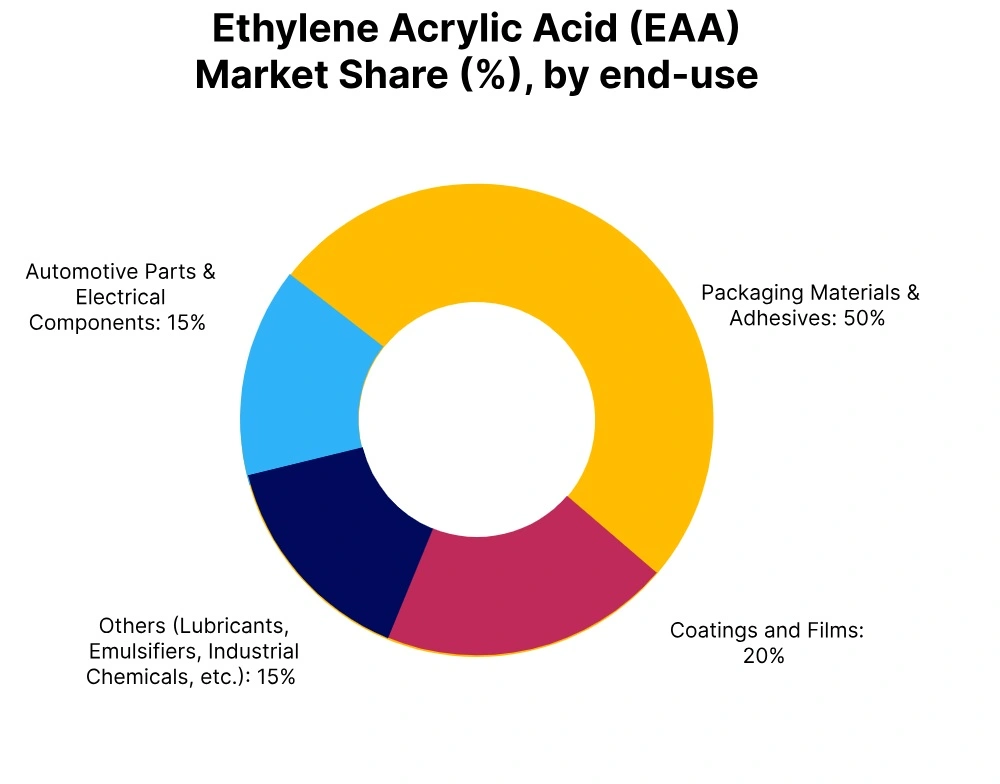Price-Watch’s most active coverage of Ethylene Acrylic Acid (EAA) price assessment:
- Ethylene Acrylic Acid (EAA) Acrylic Acid content=6% FOB Antwerp, Belgium
- Ethylene Acrylic Acid (EAA) Acrylic Acid content=6.9% FOB Tokyo, Japan
- Ethylene Acrylic Acid (EAA) Acrylic Acid content=6.5% FOB Barcelona, Spain
- Ethylene Acrylic Acid (EAA) Acrylic Acid content=6% CIF Jakarta Belgium, Indonesia
- Ethylene Acrylic Acid (EAA) Acrylic Acid content=6.5% CIF JNPT Spain, India
- Ethylene Acrylic Acid (EAA) Acrylic Acid content=6.5% CIF Shanghai Spain, China
Ethylene Acrylic Acid (EAA) Price Trend Q3 2025
In Q3 2025, Ethylene acrylic acid (EAA) prices in various countries showed a mix of increases and decreases. While Belgium, India, and China experienced notable price growth, Japan saw a slight decline. This variation was due to different industrial demands in sectors like automotive, chemicals, and construction. Despite global economic slowdowns, some regions saw steady ethylene acrylic acid (EAA) demand, supporting higher prices.
In September 2025, Ethylene acrylic acid (EAA) prices in countries like Belgium and India remained strong, reflecting resilience in key sectors. Conversely, Ethylene acrylic acid (EAA) price trends in Japan indicated reduced demand, mirroring the broader global slowdown. The global market exhibited mixed recovery signals in Q3, influenced by regional economic conditions.
Spain
Ethylene Acrylic Acid Export prices FOB Barcelona, Spain, Grade- Acrylic Acid content=6.5%.
Ethylene acrylic acid (EAA) prices in Spain increased by 12.6% in Q3 2025, driven by steady demand from sectors like chemicals and automotive. The country’s strong position within European manufacturing helped sustain higher prices, even amid global economic pressures. Spain’s market saw increased industrial production, particularly in automotive and chemical industries, which boosted EAA demand.
In September 2025, EAA prices in Spain remained elevated, reflecting continued growth in these sectors. The Ethylene acrylic acid (EAA) price trend in Spain showed resilience, positioning it as one of the stronger markets in Europe. The price growth indicated stable industrial activity, despite the broader global slowdown affecting other regions.
Japan
Ethylene Acrylic Acid Export prices FOB Tokyo, Japan, Grade- Acrylic Acid content=6.9%.
EAA prices in Japan saw a slight decline of 1.4% in Q3 2025. This decrease was due to reduced demand in key sectors such as automotive and chemicals. The global slowdown impacted Japan’s industrial production, weakening consumption of EAA. Despite Japan’s significant role in Asia’s industrial market, weaker demand led to a price drop.
In September 2025, Ethylene acrylic acid prices in Japan remained subdued, reflecting ongoing challenges in industrial output. The Ethylene acrylic acid (EAA) price trend in Japan mirrored the broader market decline, influenced by reduced consumption in its key sectors. Japan’s recovery remained slow due to continued economic uncertainty in the region.
Belgium
Ethylene Acrylic Acid Export prices FOB Antwerp, Belgium, Grade- Acrylic Acid content=6%.
EAA prices in Belgium surged by 15.1% in Q3 2025, driven by high demand in the chemical and automotive sectors. Despite global challenges, Belgium’s industrial activity remained strong, supporting higher EAA prices. The country’s strategic position in the European market allowed it to benefit from increased production and export opportunities.
In September 2025, EAA prices in Belgium continued to rise, reflecting the ongoing demand in both domestic and export markets. The Ethylene acrylic acid price trend in Belgium showed robust growth, indicating that its industrial sectors had remained resilient even in a challenging global economic environment.
Indonesia
Ethylene Acrylic Acid Import prices CIF Jakarta, Indonesia, Grade- Acrylic Acid content=6%.
EAA Prices in Indonesia, importing from Belgium, saw a price increase of 14.2% in Q3 2025. The rise was primarily driven by Belgium’s strong market performance, which impacted import prices. Indonesia’s manufacturing and construction sectors showed steady demand, which supported the price growth. The global supply chain disruptions also contributed to higher EAA import costs.
In September 2025, EAA prices in Indonesia mirrored the trend in Belgium, continuing to reflect strong industrial activity. Despite regional challenges, Indonesia’s industrial sectors kept solid demand, pushing EAA prices higher. The Ethylene acrylic acid price trend in Indonesia in line with the European market’s continued resilience.
India
Ethylene Acrylic Acid Import prices CIF Nhava Sheva, India, Grade Acrylic Acid content=6.5%.
EAA prices in India, importing from Spain, increased by 13.9% in Q3 2025. The rise in prices was driven by significant demand from automotive, construction, and chemical industries. India’s industrial consumption of EAA remained steady, in spite of global economic challenges, supporting higher prices. Large-scale imports and strong sectoral demand contributed to the price growth.
According to PriceWatch, in September 2025, EAA prices in India remained high, mirroring ongoing industrial activity. The Ethylene acrylic acid (EAA) price trend in India reflected the resilience of its key sectors, which continued to fuel demand for raw materials like Ethylene acrylic acid, despite a global market slowdown.
China
Ethylene Acrylic Acid Import prices CIF Shanghai, China, Grade- Acrylic Acid content=6.5%.
EAA prices in China, importing from Spain, went up by 12.5% in Q3 2025. This price hike was driven by strong demand in sectors like automotive and chemicals, as China’s industrial output remained resilient. Regardless of the global slowdown, China continued to maintain stable demand for EAA, which supported the price growth.
The price increase was influenced by rising import costs and global logistical disruptions. According to PriceWatch, in September 2025, EAA prices in China continued to rise, reflecting sustained demand from its key industries. The Ethylene acrylic acid price trend in China reflected the positive demand patterns seen in other major industrial markets globally.






